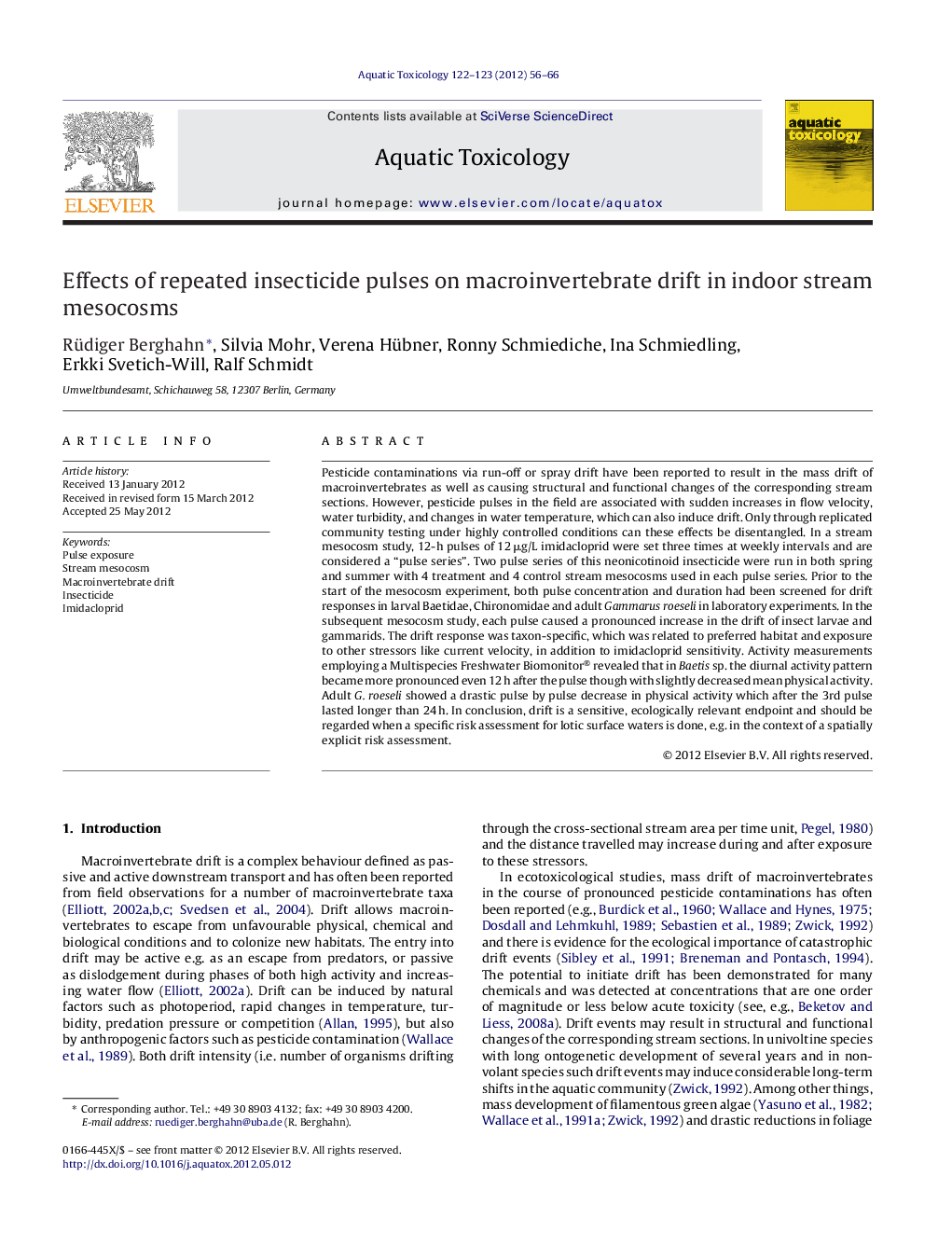| کد مقاله | کد نشریه | سال انتشار | مقاله انگلیسی | نسخه تمام متن |
|---|---|---|---|---|
| 4529643 | 1625972 | 2012 | 11 صفحه PDF | دانلود رایگان |

Pesticide contaminations via run-off or spray drift have been reported to result in the mass drift of macroinvertebrates as well as causing structural and functional changes of the corresponding stream sections. However, pesticide pulses in the field are associated with sudden increases in flow velocity, water turbidity, and changes in water temperature, which can also induce drift. Only through replicated community testing under highly controlled conditions can these effects be disentangled. In a stream mesocosm study, 12-h pulses of 12 μg/L imidacloprid were set three times at weekly intervals and are considered a “pulse series”. Two pulse series of this neonicotinoid insecticide were run in both spring and summer with 4 treatment and 4 control stream mesocosms used in each pulse series. Prior to the start of the mesocosm experiment, both pulse concentration and duration had been screened for drift responses in larval Baetidae, Chironomidae and adult Gammarus roeseli in laboratory experiments. In the subsequent mesocosm study, each pulse caused a pronounced increase in the drift of insect larvae and gammarids. The drift response was taxon-specific, which was related to preferred habitat and exposure to other stressors like current velocity, in addition to imidacloprid sensitivity. Activity measurements employing a Multispecies Freshwater Biomonitor® revealed that in Baetis sp. the diurnal activity pattern became more pronounced even 12 h after the pulse though with slightly decreased mean physical activity. Adult G. roeseli showed a drastic pulse by pulse decrease in physical activity which after the 3rd pulse lasted longer than 24 h. In conclusion, drift is a sensitive, ecologically relevant endpoint and should be regarded when a specific risk assessment for lotic surface waters is done, e.g. in the context of a spatially explicit risk assessment.
► Repeated short-term imidacloprid pulses at sublethal levels increased invertebrate downstream drift in stream mesocosms.
► Taxa in flow-exposed habitats were most affected by downstream drift regardless insecticide concentration.
► Activity of Baetis fuscatus and Gammarus roeseli was also measured in situ in cages with quadropole technique.
► In adult G. roeseli there was a pulse by pulse decrease and more and more retarded recovery.
► Invertebrate drift should be regarded as sensitive endpoint in the risk assessment.
Journal: Aquatic Toxicology - Volumes 122–123, 15 October 2012, Pages 56–66